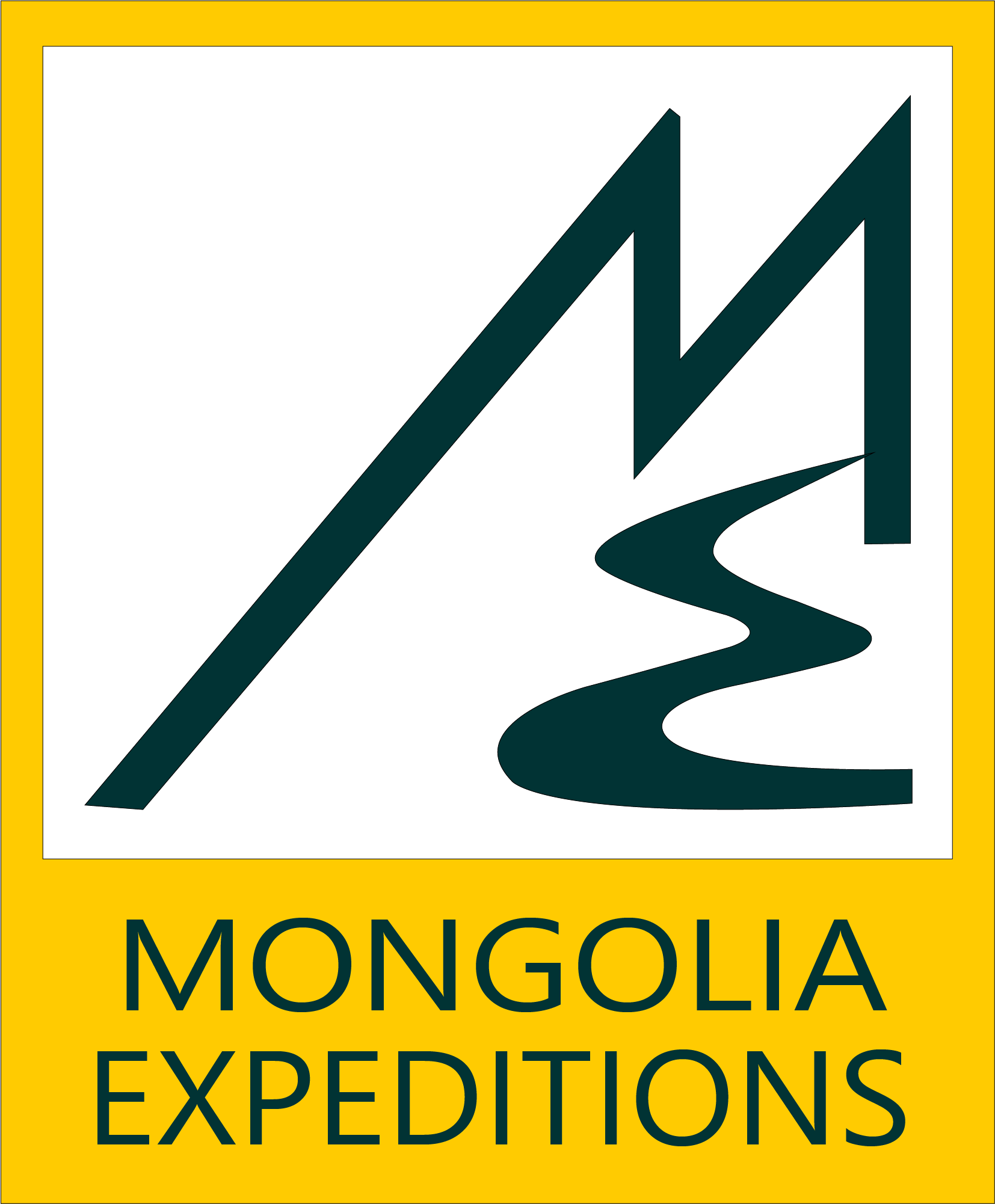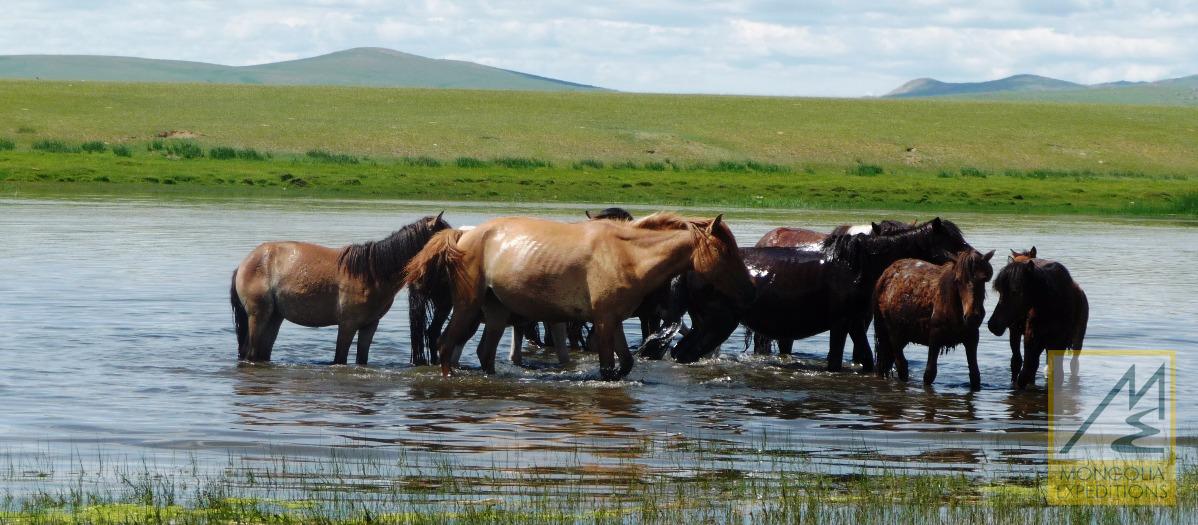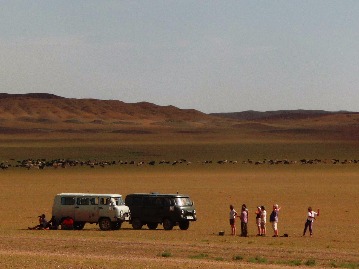Tour Description
13 day overland driving tour. The tour offers an exploration of what Mongolians call "Khangai", the land of forested mountains, clear lakes and streams. It is populated by nomadic herders whose way of life has changed little since many centuries. They tend large herds of yaks, horses, goats and sheep. Meet these hospitable people and learn of their culture and traditions. Visit Buddhist monasteries and the medieval capital of Genghis Khan, from where he launched his victorious cavalry. Hiking, horseback riding, are the main activities. Overnights are mainly in traditional felt covered tents locally known as gers.
Dates
What’s Included
- All accommodation (twin shared)
- All transfers including arrival & departure
- Air-conditioned 4*4 Japanese van
- Indicated meals (B-breakfast, L-lunch, D-dinner)
- Visits & national park fees
- English speaking guide
- Activity fees
What's Excluded
- Travel insurance
- Meals not indicated
- Drinks
- Gratuities
Day 1
Day 2
After breakfast meet with your guide and drivers and drive (6-7hours) to Amarbayasgalant Monastery. The tarmac road runs across the southern approaches of Siberia: wooded hills and fertile soils. Arrival to the valley of Holy Burenkhan Mt which shelters the monastery. Nearby there is a visitor camp comprised of traditional felt covered tents, locally known as 'gers'. There is a separate building equipped with conventional showers and bathrooms. Throughout the journey you will stay in the kind of camps. Dinner and overnight. (ger/B,L,D)
Day 3
Morning visit to the monastery. Built in between 1727-1736, it has miraculously escaped destruction during the anti-religious campaigns of 1930-ies and remains the most complete Buddhist complex outside of the capital. It today houses a cheerful folk of boy-monks and their teachers. Spend the morning in the peaceful premises of the monastery watching the daily service and taking pictures of the monastic life. Then travel (6 hours) to Uran Togoo NP, a spectacular area of extinct volcanoes covered in coniferous woods. Upon arrival climb the Uran Togoo volcano. Dinner and overnight in a local ger camp. (ger/B,L,D)
Day 4
Longest travel day (8 hours) to the province of Arkhangai, a spectacular region of wooded dome shaped mountains, rugged terrain and lakes. Landscape is dotted with white gers of nomads. Thousands of yaks, sheep and horses graze alongside the road. Your destination is the Terkhiin Tsagaan lake, created by an earthquake millions of years ago and surrounded by faults, canyons and extinct volcanoes. Here we settle in a local ger camp for 2 nights. (ger/B,L,D)
Day 5
The area is perfect for a number of outdoor activities: hiking, horseback riding, swimming and bird watching. Accompanied by local riding guides you may take a short ride to Khorgo crater. The last few hundred meters are to be climbed on foot. From the brim of the crater there opens a splendid view over the lake and the surrounding area. Alternatively, you may just laze by the shore or hike on your own. Boating and fishing options are also available. (ger/B,L,D)
Day 6
Drive to Tsenkher valley with over a dozen of medicinal hot springs that emerge from the depth of the earth - each with its own mineral content. They proved to be an effective cure for a number of illnesses. The landscape here is typical to eastern Khangai mountain foothills: wooded domes with grassy valleys at their base. Nomadic encampments and hundreds of grazing yaks, sheep and goats watched by tough horsemen continuously pass by. Arrive at a ger camp and take a bath or shower in the hot spring water. You may as well take a relaxing body massage at a small additional fee. (ger/B,L,D)
Day 7
Travel to the Orkhon river valley. Along the way visit the Tuvkhun monastery. Built in 1653 and named as a Land of Happy Solitude the monastery served as a refuge of meditation to the first Mongolian Buddhist King Zanabazar. He was the one to introduce the religion with a hope to unite Mongols under banners of the Yellow Faith. The monastery is nestled near the summit of Shiveet Ulaan Mt. There are several temple halls restored in recent years with the revival of Buddhism in Mongolia. A little tunnel in the rock called mother belly is believed to purify your sins in the next rebirth if you crawl in and out of it. Continue to the 24 meter high Ulaan Tsutgalan waterfall formed by a small tributary dropping in to a fault in which the main body of Orkhon river flows. We arrive to the 24 meter high Ulaan Tsutgalan waterfall formed by a small tributary dropping in to a fault in which the main body of Orkhon river flows. Visit the waterfall and relax in a local ger camp. (ger/B,L,D)
Day 8
Today take a short trip to see a "Horsemanship show" presented by local herders. Nomadic kids start riding at the age of four and develop a "Centaur" riding abilities by their teens. They will demonstrate different tricks such as lassoing horses, picking tiny items from ground at full gallop and breaking in a horse. We will as well visit a ger of a nomadic family. It is a simple but reliable dwelling, perfect in extreme weather conditions and suitable for frequent moves from one place to another. Taste 'airag', the fermented horse milk the area is famous for and learn about local life and traditions. On return to camp a delicacy of Mongolian cuisine - "khorkhog" or chunks of meat and vegetables pressure cooked with heated rocks will be served for dinner. (ger/B,L,D)
Day 9
Presently there is a small town but the former capital still lies in ruins after being leveled by Chinese Min dynasty troops in 1380-ies. Today Karakorum is recognized by the massive walls of the Erdene Zuu monastery. It was built in the 16 century by a Mongol warlord with a purpose of spreading the "yellow" faith. The monastery has suffered a tremendous destruction during the anti-religion campaigns of 1930-ies with only a dozen temples surviving to these days. Visit the temples as well as few surviving artifacts of the old capital. On a hill outside the monastery sits a stone phallus. The phallus is said to retain the sexual impulses of the monks and ensure their good behavior. Dinner and overnight in a local ger camp. (ger/B,L,D)
Day 10
After breakfast take a short drive to Khultegin and Bilge obelisks - both leaders of the Turkic empire that ruled the Central Asia from 552 to 734 AD. 10 thousand Runic and Chinese inscriptions describe their history, namely the courses of their fall and conclusive recommendations to future generations. Continue to Mongol Els sand dunes - 70kms in length that originate in the Gobi and stretch from south to north across hilly steppes. Dinner and overnight in a local ger camp. (ger/B,L,D)
Day 11
The wild horses of Przhewalski, locally known as takhi, were re-introduced here in 1993 after they had gone extinct 4 decades earlier. Brought from several European zoos takhi are now totally intact with wilderness having even to withstand survival against wolves. Now more than 200 takhi, all of them born in Mongolia, roam their historic homeland. The park as well is home to red deer, marmots, black vultures, black kites and flocks of partridges and abundant flowers. On arrival we will visit the local information centre. In he evening you will be guided to see takhi when they descend from hills to drink from a small stream. Dinner and overnight in the park's ger camp. (ger/B,L,D)
Day 12
This morning take a 2 hour return drive to Ulaanbaatar. You may stop by local souvenir and other shops on the way to your hotel. Farewell dinner. (hotel/B,D)
Day 13
Transfer to airport for your return flight home. (B)
-
 Sights and Sounds of Mongolia Jeep Tour
Sights and Sounds of Mongolia Jeep Tour -
 Sights and Sounds of Mongolia Jeep Tour
Sights and Sounds of Mongolia Jeep Tour -
 Sights and Sounds of Mongolia Jeep Tour
Sights and Sounds of Mongolia Jeep Tour -
 Sights and Sounds of Mongolia Jeep Tour
Sights and Sounds of Mongolia Jeep Tour -
 Sights and Sounds of Mongolia Jeep Tour
Sights and Sounds of Mongolia Jeep Tour -
 Sights and Sounds of Mongolia Jeep Tour
Sights and Sounds of Mongolia Jeep Tour -
 Sights and Sounds of Mongolia Jeep Tour
Sights and Sounds of Mongolia Jeep Tour -
 Sights and Sounds of Mongolia Jeep Tour
Sights and Sounds of Mongolia Jeep Tour -
 Sights and Sounds of Mongolia Jeep Tour
Sights and Sounds of Mongolia Jeep Tour -
 Sights and Sounds of Mongolia Jeep Tour
Sights and Sounds of Mongolia Jeep Tour -
 Sights and Sounds of Mongolia Jeep Tour
Sights and Sounds of Mongolia Jeep Tour -
 Sights and Sounds of Mongolia Jeep Tour
Sights and Sounds of Mongolia Jeep Tour
SUZANNE and BEAT
Hi Batsuren,




